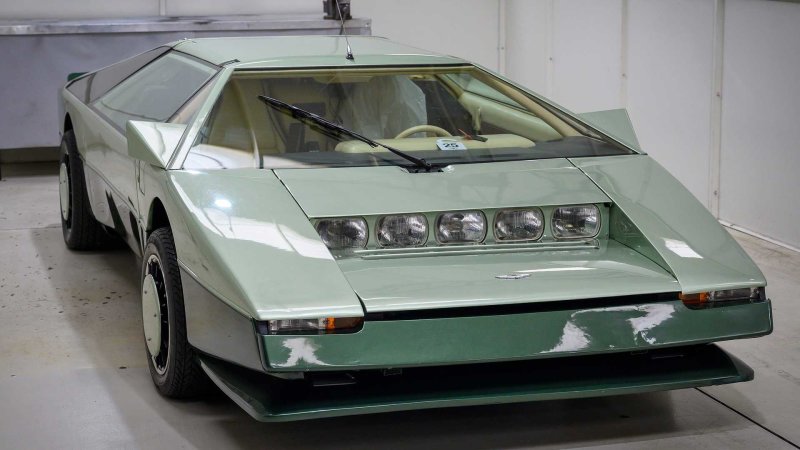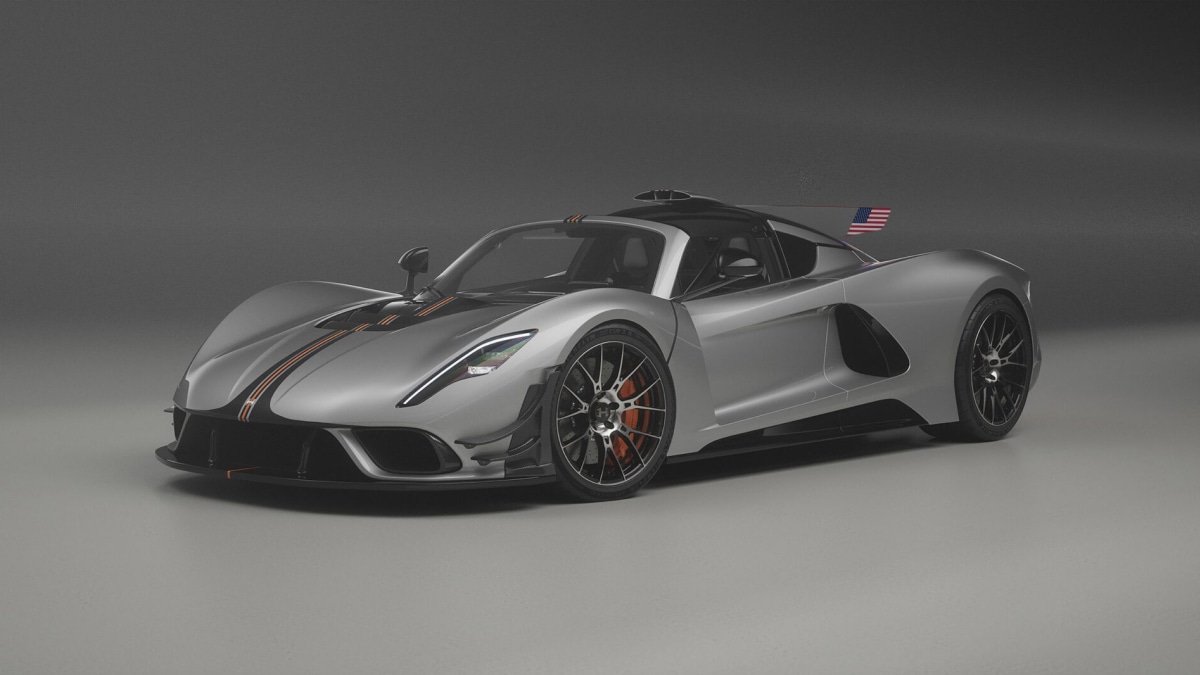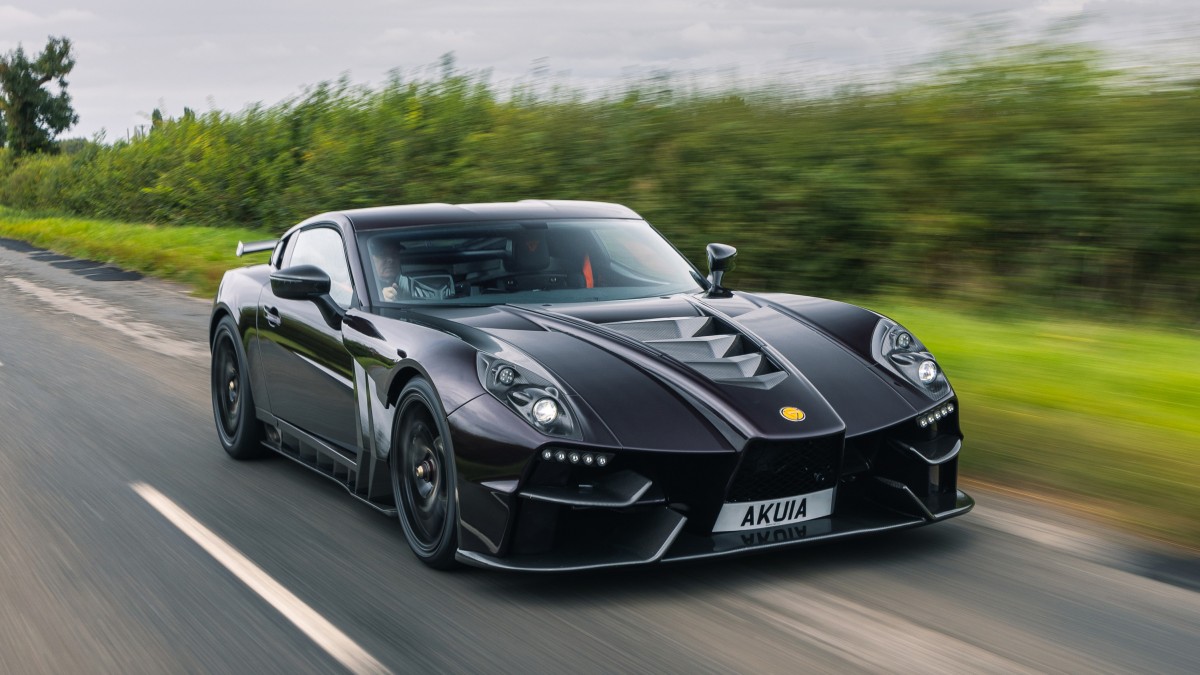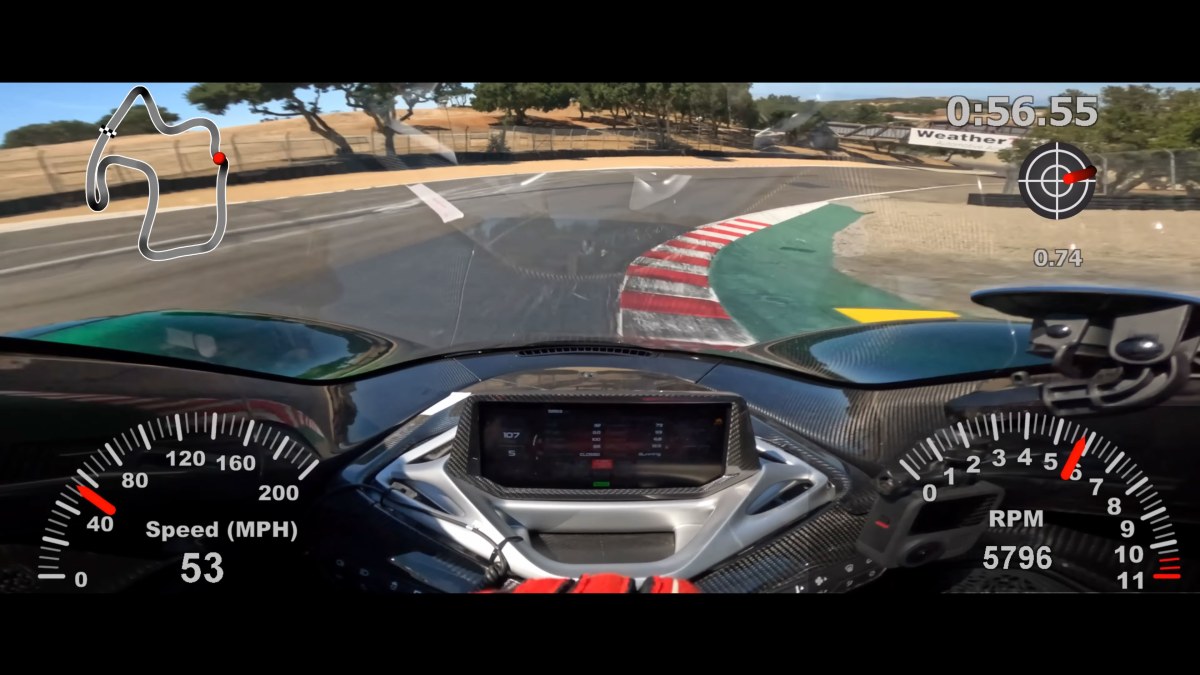Aston Martin’s 1980 Bulldog concept will receive a second chance to break the 200-mph barrier after it emerges from a complete, 18-month restoration. It was developed with all-out speed in mind — the British company had hoped the coupe would become the fastest car in the world, but it missed its target before getting shelved.
Had things gone as planned, car-crazed kids in the 1980s would have grown up with a picture of the Bulldog on their bedroom wall. Aston Martin wanted to hoist itself up the exotic car pecking order by building the fastest car in the world, though it didn’t envision more than a limited production run of 15 to 25 cars. Penned by William Towns, who also drew the Lagonda, the Bulldog looked like nothing else on the road (let alone in the Aston Range) due in part to its five center-mounted lights, and it broke with tradition by adopting a mid-mounted engine.
Engineers floated a top speed of 237 mph, according to The Drive, but the Bulldog ran out of breath at 191 mph. Victor Gauntlett axed the project shortly after taking the top job at Aston Martin in 1981 because the numbers didn’t add up; the firm wasn’t in a position to chase speed records. Now, 40 years later, it’s almost time to try again.
Classic Motor Cars began the lengthy process of restoring the Bulldog on behalf of a private owner in 2020, and it enlisted the help of Aston Martin factory driver Darren Turner to see if it can break the 200-mph barrier once it’s back in one piece. Richard Gauntlett, the son of the company’s former boss, is overseeing the project. We don’t know precisely when or where the speed run will take place, but Classic Motor Cars aims to have the Bulldog running by the end of 2021. In a statement, it said that the car is “well on the way to being restored.”
Restoring any exotic car from the early 1980s is a meticulous, expensive, and time-consuming process, and bringing a one-off concept car back to life increases the number of challenges exponentially. Classic Motor Cars can’t order parts from Aston Martin, for example, and it’s not able to study another example to find out how a specific panel is welded. It helps that the Bulldog hasn’t been significantly modified over the past four decades, though some parts (like the door mirrors) were added later, and that it was complete when it arrived at the shop.
Power for the Bulldog comes from a 5.3-liter V8 that’s twin-turbocharged to 600 horsepower, figures that are still respectable in 2021. Classic Motor Cars won’t make any major mechanical modifications to the drivetrain, so the Bulldog will need to attempt to reach the 200-mph mark in its original configuration, but the shop is sidestepping originality in the name of safety by adding an internal roll bar that it plans to conceal under the sheetmetal.
“What has been revealed is that the basic structure showed a lack of torsional rigidity by today’s standards, and a complete lack of rollover protection. For a vehicle with such enormous performance, we felt this was an essential safety improvement to allow the car to be driven in the manner for which it was designed,” the shop wrote.
Reaching the 200-mph mark will be an impressive feat for the Bulldog and for the folks giving it a new lease on life, but it will no longer be enough to claim the world’s top-speed crown. That honor ostensibly goes to the SSC Tuatara, which averaged 316 mph in October 2020. YouTubers called the record into question after noticing irregularities in the video, and SSC aborted its second attempt in December 2020 due to mechanical issues but plans to try again.




